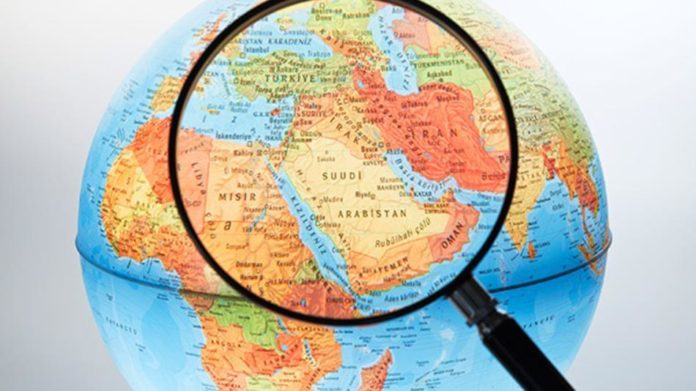
In Switzerland, Iranian and American diplomats were restarting their extreme discussions about the best way to manage Tehran’s atomic plan. Both sides insisted the discussions were confined to issues nuclear, nothing else. And that is a great thing, because the complex Middle East has never been as it is at this moment. Let’s take a look at all that’s happening…
Saudi Arabia has declared it now has 150,000 troops standing by and they have sent 100 warplanes to attack targets inside Yemen. The intervention was backed by nine other states and has the “logistical and intelligence” support of Washington. The authorities are all fellow Sunnis — Egypt, Jordan, Sudan, Morocco, Pakistan, United Arab Emirates, Qatar and Kuwait, several supplying airplanes of their very own. Egypt, based on a new report, is preparing to send troops.
So the split is certainly Sunni v. Shia, the same tension that created ISIS and has split Iraq and Syria.
For Yemen, Tehran is the main patron of the Houthi tribe, providing cash, arms and training. The Houthis were mainly confined to the north, but in September they took over the capital city of Sana’a.
In peaceful times, Yemen is a fantastic country to travel to. It does not seem like everywhere else on Earth, except perhaps the examples in a storybook. It is, additionally, an ideal example of what occurs when a state falls — or actually, never coalesces in the first place. And that lesson really describes what the US is doing in Iraq and Yemen.
By monopolizing using violence, states were made to bring coherence to human issues. In Iraq the authorities of Saddam Hussein used to handle that coherence, albeit viciously. Now, in the conflict against ISIS, which ran into the emptiness left by a state that has continued to fail, the US is joining with Iran in an attempt to reestablish the power of the weak central government in Baghdad. That government is controlled by Iraq’s Shi’ite majority, as well as by Tehran which doesn’t need mayhem on the boundary that was long shared by both nations.
Yemen, on the flip side, has never actually managed to work as a state. It was two states — the People’s Democratic Republic of Yemen in the south, as well as plain old Yemen in the north. Tribal power has frequently trumped the states, as well as the state’s long boundary happens to be with excellent regional competition of Tehran and Saudi Arabia. Yemen, known as Arabia Felix, or ‘Happy Arabia,’ was so near the Saudi kingdom the boundary wasn’t even demarcated until June of 2000, in an arrangement signed by Saleh.
So the Iranians aren’t really troubled by chaos in Yemen, particularly if the chaos finishes — as it seemed like it might — with the Houthis more or less in charge, as well as the big segments of the Yemeni military that stay true to him. The ensuing chaos removed 100 US advisers off of the air base from which they used the drones that sought for al-Qaeda operatives.
“We’re creating a Joint Preparation Cell with Saudi Arabia to organize US military and intelligence support,” the White House said in a statement. The other utilization of uniforms? Clear, for a change, who is really fighting.
France warned on Tuesday that “inadequate” improvement was made toward a nuclear deal between Iran and six world powers, with special differences over research and development as well as the problem of sanctions.
The largest sticking point, Western officials say, stays the demands for no limitations on research and development of sophisticated centrifuges in Iran. Another problem is sanctions… Iran needs all UN sanctions lifted instantly after a deal is agreed upon, together with the most crippling US and European Union limitations on Tehran’s energy and financial sectors.
“Iran will have to show greater flexibility and require some tough choices in the coming days if we want to reach a deal,” Britain’s Deputy UN Ambassador, Peter Wilson, told the council.
Jordan is currently fighting to satisfy electricity demand, which is growing by more than 7 percent per year as a result of an increasing population and industrial growth, and imports almost 98 percent of its own energy from petroleum products.
The deal provides for site evaluation procedure, a feasibility study and an environmental impact appraisal. Jordan expects that eventually atomic power could supply nearly 40 percent of its own total electricity generating capacity.
“White House counter-terrorism adviser, Lisa Monaco, and Lebanese Interior Minister, Nouhad Machnouk, met on Tuesday to discuss protection concerns in the area and on-going attempts to conquer the Islamic State,” the White House said in a statement.
America said Hadi, holed up in Aden since fleeing the Houthi-managed capital of Sana’a last month, was at the compound he’s been using as a base. It offered no other details on his next moves.
“We were in touch with him before today,” State Department spokeswoman, Jen Psaki, told a briefing in Washington. “He’s no longer at his home. I am not in position to support any additional details from here about his location.”
You want to support Anonymous Independent & Investigative News? Please, follow us on Twitter: Follow @AnonymousNewsHQ
SOURCES:
“Why the U.S. Is Fighting Against Iran in Yemen But Beside It in Iraq.” Time. Time, n.d. Web. 27 Mar. 2015. http://time.com/3759875/iran-fighting-yemen-iraq-us/
“Yemen’s Houthis Sweep Southward as President Flees Palace – Middle East.” Haaretz.com. N.p., n.d. Web. 27 Mar. 2015. http://www.haaretz.com/news/middle-east/1.648773
“Middle East Updates / U.S.-led Coalition, Iraqis Pound Islamic State in Tikrit – Middle East Updates.” Haaretz.com. N.p., n.d. Web. 27 Mar. 2015. http://www.haaretz.com/news/middle-east/middle-east-updates/1.648660




